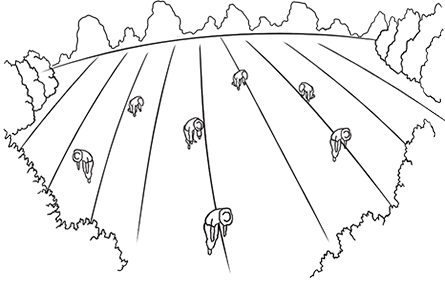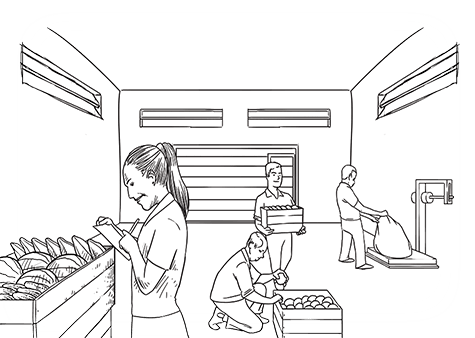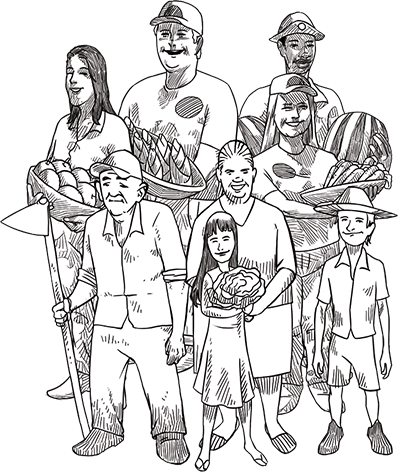The next step after the separation of projects will be their analysis, a moment when the EEx must first analyse only the projects of Group 1 (local projects), observing the next selection criteria.



Smallholder farmers can participate in the selection as individual suppliers or organized in informal or formal groups (associations and cooperatives with DAP Legal Entity). However, formal groups have priority over the others, and informal groups have priority over individual suppliers.

The access and construction of differentiated markets of commercialization of smallholder farming goods can be potentialized when farmers are organized. Through associations and cooperatives, farmers have better work opportunities and strengthen the community based on solidarity, organizing production and facilitating the access to consumer markets, with social inclusion and local development. Because of this, the PNAE encourages organization, prioritizing smallholder farmers who belong to associations and cooperatives. (Smallholder farming acquisition manual. 2nd edition. 2015).

Participation of smallholder farming in school feeding.
School feeding manager in Cidade de Goiás comments on the benefits and reasons that took smallholder farmers to prefer adhering to local cooperatives rather than selling individually.
FOOD FOR THOUGHT
If there is a tie in the Formal Groups criteria, which is the 3rd criteria for the selection of projects, do you know how will it be solved?


According to PNAE regulations, in case there is a tie in Formal Groups, the organizations with the highest percentage of smallholder farmers will be selected, according to a statement of DAP Legal Entity, which contains a composition of their partners.
See the video of the Cycle of Smallholder Farming Purchase for the PNAE on Module 3 Unit 2 Slide 9Land reform settlements, Quilombolas and/or indigenous communities will be considered formal and informal groups when they are composed of, at least, 50% plus 1 of associates from producer organizations, in the case of formal groups, and 50% plus 1 of smallholder farmer suppliers, in the case of informal groups, as identified by DAPs.


FOOD FOR THOUGHT
So far, you know the priority order of suppliers who belong to Group 1 – local projects, in the selection of selling projects for school feeding.
What about the other groups: Group 2 - rural projects, Group 3 - state projects and Group 4 - national projects? Won`t the projects in these groups be included in the selection for the supply of products for school feeding?

